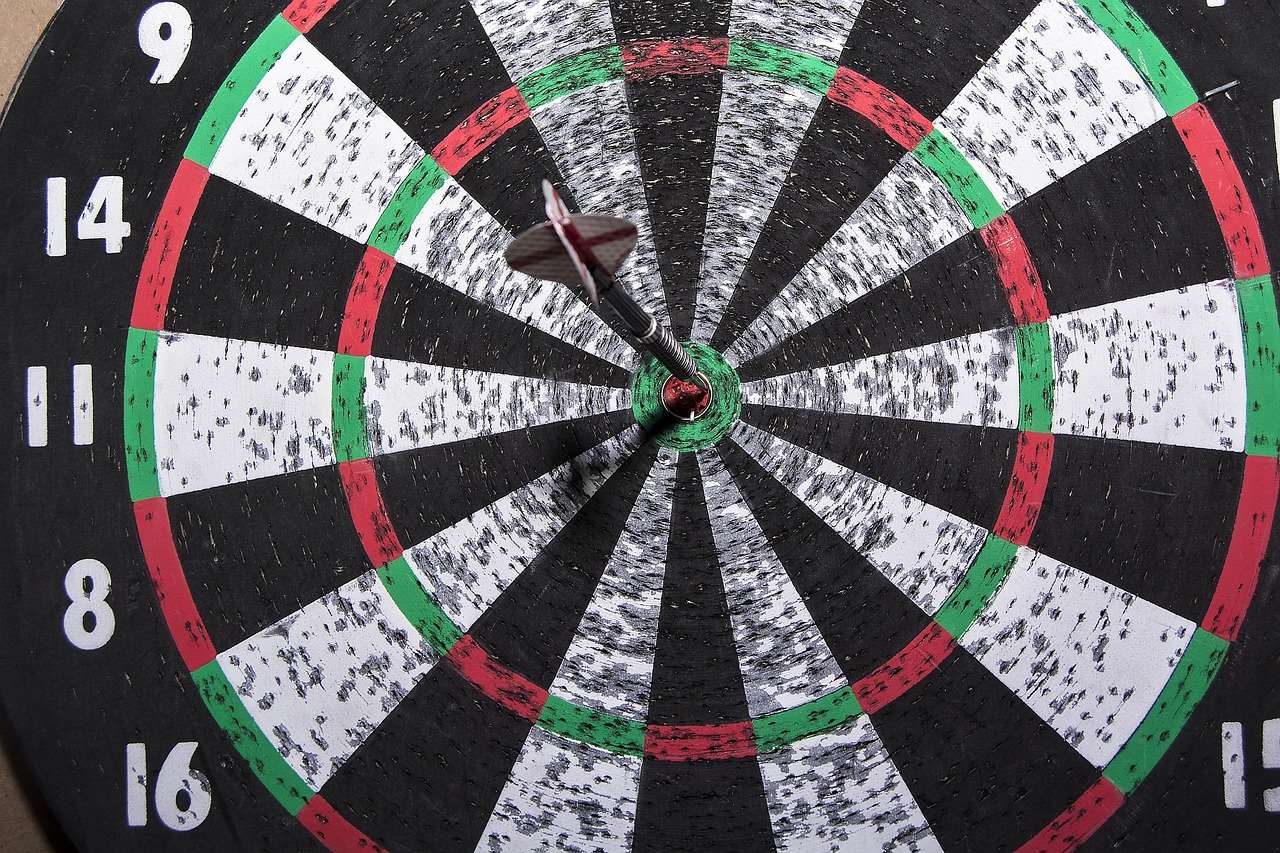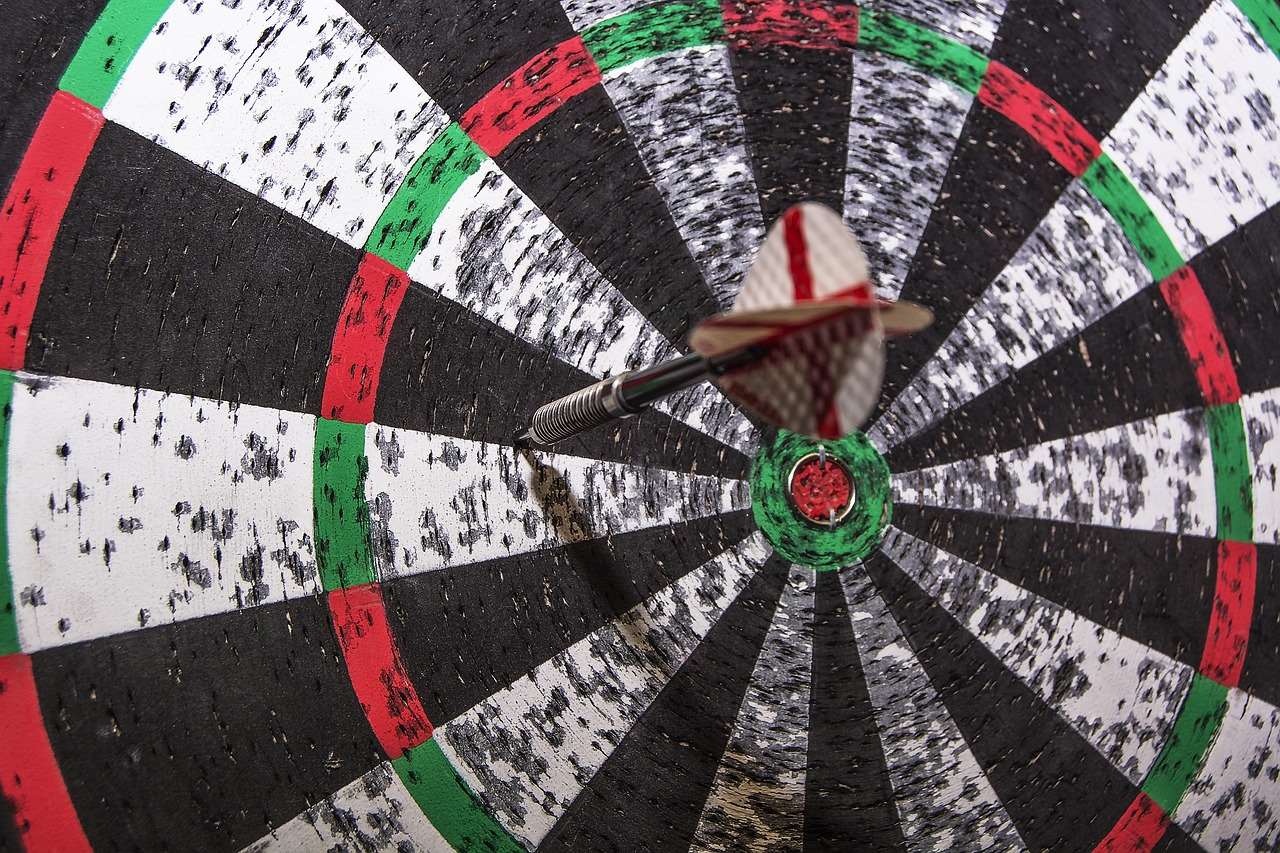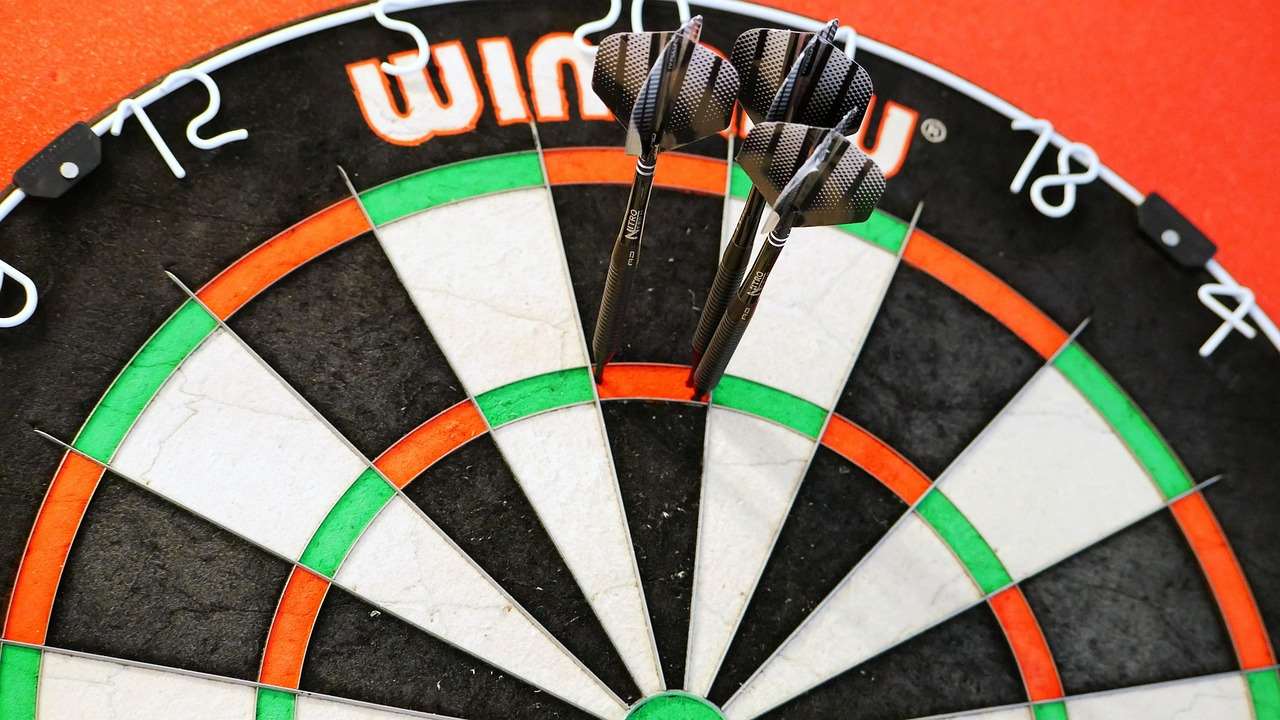Want to dominate the oche like a pro? This guide to Pub Darts For Beginners will equip you with the essential knowledge to go from novice to nailing your triples. We’ll cover everything from basic rules and scoring to stance, grip, throw, and essential practice techniques.
⚠️ Still Using Pen & Paper (or a Chalkboard)?! ⚠️
Step into the future! The Dart Counter App handles all the scoring, suggests checkouts, and tracks your stats automatically. It's easier than you think!
Try the Smart Dart Counter App FREE!Ready for an upgrade? Click above!
Understanding the Basics of Pub Darts For Beginners
Before you start picturing yourself lifting a trophy, it’s vital to grasp the fundamentals. Darts is a game of precision, skill, and a surprising amount of strategy. Whether you’re playing casually with friends or aspiring to join a local league, a solid understanding of the rules and equipment will set you up for success.
The Dartboard
The standard dartboard is divided into 20 numbered sections, each further subdivided by wires. Key areas to familiarize yourself with include:
- The Double Ring: The outer ring; hitting a section here doubles your score.
- The Treble Ring: The inner ring; hitting a section here triples your score.
- The Bullseye: The center of the board, worth 50 points.
- The Outer Bull (Single Bull): The ring around the bullseye, worth 25 points.
These areas are crucial for accumulating points quickly and efficiently. Mastering the aim for these sections is a cornerstone for any aspiring darts player.

Dartboard Setup: Height and Distance
Official regulations dictate specific measurements for dartboard setup. These measurements are in place to ensure fair play and consistency:
- Height: The bullseye should be 5 feet 8 inches (1.73 meters) from the floor.
- Throwing Distance: The oche (throwing line) should be 7 feet 9 1/4 inches (2.37 meters) from the face of the dartboard.
Ensuring the board is correctly mounted and the oche is accurately measured is essential for developing a consistent throwing motion. Incorrect setup can lead to bad habits and hinder your progress. You can learn more about the darts community and proper etiquette by visiting Darts Culture And Community Guide.
Essential Equipment for Playing Darts
While you can technically play darts with any old set you find lying around, investing in quality equipment can make a significant difference in your performance and enjoyment. Here’s a breakdown of the essential gear:
Choosing Your Darts
Darts come in a variety of weights, materials, and styles. Finding the right dart is a personal journey, but here are some factors to consider:
- Weight: Most darts range from 20 to 26 grams. Lighter darts are generally easier to control for beginners, while heavier darts offer more stability.
- Barrel Material: Brass darts are affordable and durable, making them a good starting point. Tungsten darts are denser, allowing for slimmer barrels and closer grouping.
- Grip: The grip refers to the texture of the barrel. Experiment with different grip patterns to find what feels most comfortable and secure in your hand.
Don’t be afraid to try out different darts before committing to a set. Many pubs and dart shops will allow you to test different weights and styles.

Dart Flights and Shafts
Flights and shafts play a crucial role in the aerodynamics of your dart. Experimenting with different combinations can fine-tune your throw and improve accuracy.
- Flights: Flights come in various shapes and sizes, each affecting the dart’s stability and trajectory. Standard flights are a good starting point for beginners.
- Shafts: Shafts connect the flight to the barrel. Length and material can affect the dart’s balance and flight path.
Consider durable materials to prevent frequent replacements. Broken flights and shafts are common occurrences, especially when learning, so having spares is always a good idea.
Mastering the Stance, Grip, and Throw
The three pillars of a successful dart game are stance, grip, and throw. Each element builds upon the other, creating a fluid and consistent motion that translates to accuracy on the board. Mastering these fundamental techniques is key to transitioning from a beginner to a more skilled player. This is what Pub Darts For Beginners is all about.
Finding Your Perfect Stance
Your stance provides the foundation for your entire throw. A stable and balanced stance is crucial for maintaining consistency. Here are a few common stances to consider:
- The Forward Stance: Stand with your dominant foot pointing directly at the board and your body facing forward.
- The Side Stance: Stand with your body angled to the side, with your dominant foot slightly ahead.
- The Modified Stance: A combination of the forward and side stances, tailored to your individual comfort and balance.
Experiment with different stances to find what feels most natural and allows you to maintain a steady base. Remember to keep your weight balanced and avoid leaning too far forward or backward.

The Importance of a Consistent Grip
Your grip is the connection between you and the dart. A consistent grip is essential for repeatable throws. Here are some tips for developing a good grip:
- Keep it Relaxed: Avoid gripping the dart too tightly, as this can cause tension and affect your accuracy.
- Find Your Sweet Spot: Experiment with different grip points on the barrel to find what feels most comfortable and provides the best control.
- Maintain Consistency: Once you find a grip that works, stick with it. Avoid changing your grip during a game, as this can disrupt your throwing motion.
Practice consistently to refine your grip and develop muscle memory. A comfortable and consistent grip will significantly improve your accuracy over time.
Developing a Smooth Throwing Motion
Your throwing motion should be smooth, fluid, and controlled. Avoid jerky movements or excessive force, as these can lead to inconsistencies. Here are some tips for developing a good throwing motion:
- The Backswing: Draw the dart back smoothly, keeping your elbow high and your wrist locked.
- The Forward Swing: Accelerate the dart forward in a straight line towards your target.
- The Release: Release the dart smoothly at the peak of your forward swing, extending your arm fully towards the board.
- The Follow-Through: Continue your arm motion after releasing the dart, pointing towards your target.
Practice your throwing motion regularly, focusing on smoothness and consistency. Record yourself throwing and analyze your technique to identify areas for improvement. Consider watching professionals; you may want to What To Expect At Live Darts.
Scoring and Strategy
Knowing the rules and scoring is just the beginning. Strategic thinking is also vital, as understanding when to aim for certain numbers can significantly improve your chances of winning. These elements go hand in hand with Pub Darts For Beginners.
Understanding the Scoring System
The most common darts game is 501, where each player starts with 501 points and must reduce their score to zero. The catch? You must finish on a double or the bullseye.
- Singles: Hitting a section in the main area awards the face value of the number.
- Doubles: Hitting the outer ring doubles the value of the number.
- Triples: Hitting the inner ring triples the value of the number.
- Bullseye: Worth 50 points and counts as a double for finishing.
- Outer Bull: Worth 25 points and does not count as a double for finishing.
Familiarize yourself with these scoring rules, as they’re the foundation of the game.

Strategic Number Selection
Strategic number selection can significantly increase your chances of winning. Here are a few strategies to consider:
- Aim for High Scores: Focus on hitting triples early in the game to reduce your score quickly.
- Setup Your Finish: Plan your shots to leave yourself with a manageable double to finish.
- Consider the Opponent: Adapt your strategy based on your opponent’s skill level and playing style.
Consider the mathematics involved and practice different checkout routes to improve your strategic thinking. Effective strategy separates casual players from competitive ones.
Practice Drills and Improvement Tips
Consistent practice is the key to improvement in any skill, and darts is no exception. Implementing targeted practice drills will help you hone your accuracy, consistency, and strategic thinking. Even with Pub Darts For Beginners, dedication to practice is essential.
Targeted Practice Drills
Instead of just throwing aimlessly, focus on specific areas and drills to improve your weaknesses. Here are a few examples:
- Around the Clock: Start at number 1 and work your way around the board, hitting each number in sequence.
- Doubles Practice: Focus solely on hitting doubles, starting with double 1 and working your way up to double 20.
- Triples Practice: Similar to doubles practice, but focus on hitting triples instead.
These drills help to build muscle memory and improve your accuracy on specific sections of the board.

Analyzing Your Performance
Keep track of your scores and analyze your performance to identify areas for improvement. Consider using a dart scoring app or a simple notebook to record your results.
- Track Your Averages: Monitor your average score per throw to gauge your overall performance.
- Identify Weak Spots: Analyze your results to identify which areas of the board you struggle with.
- Adjust Your Practice: Tailor your practice drills to focus on your weaknesses and improve your overall game.
By analyzing your performance, you can identify areas where you need to improve and adjust your practice accordingly. This data-driven approach will help you to make consistent progress.
Safety and Etiquette
While darts is generally a safe game, it’s essential to follow basic safety precautions to prevent accidents. Additionally, observing proper etiquette ensures a pleasant and respectful playing environment for everyone.
Essential Safety Precautions
- Clear the Throwing Area: Ensure that the area around the dartboard is clear of obstacles and bystanders.
- Never Throw While Someone is Retrieving Darts: Wait for the other player to step away from the board before throwing.
- Use a Dartboard Surround: A surround protects the wall from stray darts and reduces the risk of injuries.
Following these safety precautions will help to prevent accidents and ensure a safe playing environment for everyone.
Darts Etiquette
- Be Respectful of Your Opponent: Avoid distracting or taunting your opponent while they are throwing.
- Call Your Scores Clearly: Clearly announce your score after each throw.
- Retrieve Your Own Darts: Retrieve your own darts from the board after each turn.
By observing proper etiquette, you can contribute to a positive and enjoyable playing environment for everyone.
Conclusion
Mastering Pub Darts For Beginners requires understanding the fundamentals, practicing consistently, and approaching the game with strategy and respect. By focusing on your stance, grip, throw, and number selection, you can significantly improve your accuracy and increase your chances of winning. Don’t forget the importance of practicing and analyzing your performance to identify areas for improvement. So, grab your darts, step up to the oche, and start your journey to becoming a skilled darts player. Now that you’re ready to take your dart game to the next level, why not explore other aspects of the sport and discover the vibrant Experience Attending Live Darts? Good luck and have fun!
Hi, I’m Dieter, and I created Dartcounter (Dartcounterapp.com). My motivation wasn’t being a darts expert – quite the opposite! When I first started playing, I loved the game but found keeping accurate scores and tracking stats difficult and distracting.
I figured I couldn’t be the only one struggling with this. So, I decided to build a solution: an easy-to-use application that everyone, no matter their experience level, could use to manage scoring effortlessly.
My goal for Dartcounter was simple: let the app handle the numbers – the scoring, the averages, the stats, even checkout suggestions – so players could focus purely on their throw and enjoying the game. It began as a way to solve my own beginner’s problem, and I’m thrilled it has grown into a helpful tool for the wider darts community.